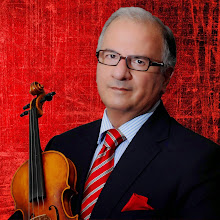 In harmony with rebirth of nature, the Persian New Year, Norooz, always begins on the first day of Spring, March 21st of each year. Norooz ceremonies are symbolic representations of two ancient concepts: End and Rebirth, light and darkness, Good and Evil. A few weeks before the New Year, Iranians clean and rearrange their homes. They make new clothes, bake pastries and germinate seeds as sign of renewal.
In harmony with rebirth of nature, the Persian New Year, Norooz, always begins on the first day of Spring, March 21st of each year. Norooz ceremonies are symbolic representations of two ancient concepts: End and Rebirth, light and darkness, Good and Evil. A few weeks before the New Year, Iranians clean and rearrange their homes. They make new clothes, bake pastries and germinate seeds as sign of renewal.But the celebrations start on the last Wednesday Eve of the old year, and ends on 13th day of the new year (April 2nd.)
On last-Wednesday-eve of the year (Chahar Shanbeh Soori = Rouge Wednesday Eve,) bonfires are lit in public places and people leap over the flames shouting: May your beautiful red colour be mine, and my sickly pallor be yours! With the help of fire and light symbols of good, people hope to see their ways through the unlucky night, into the arrival of Spring’s longer days.
The new year is not supposed to start at mid night every year, but it is rather calculated precisely on the basis of Omar-Khayyam calendar, measured 365 days, 6 hours and fractions from last Norooz. So it may happen in the morning, afternoon, or evening.
Minutes before the clock strikes New Year, all the members of the family in their clean and new outfits gather around the Norooz table called Haft-Seen, which means seven articles the names of which start with the Persian letter seen (=s.) These are (1)Sabzeh or sprouts, usually wheat or lentil representing fertility and rebirth; (2)Samanu, a pudding in which common wheat sprouts are transformed and given new life as a sweet, creamy pudding and represents the ultimate sophistication of Persian cooking; (3)Seeb which means apple and represents health and beauty; (4)Senjed, the sweet dry fruit of the lotus tree representing love. It has been said that when a lotus tree is in full bloom, its fragrance and its fruit make people fall in love and become oblivious to all else; (5)Seer which means garlic in Persian, and represents medicine; (6)Somaq or sumac berries, representing the colour of sunrise when the sun appears and Good conquers Evil; and (7)Serkeh or vinegar, which represents age and patience.
The family begins the New Year with a prayer for health, happiness and prosperity. After the initial celebration to welcome the New Year, the members of the family hug and kiss each other, eat the bounties prepared for the New Year and wish each other the best. Then all family members present the New Year's gift to each other.
The two-week-long Norooz celebrations end with 13-Be-Dar, which is the process of getting over with or passing over the thirteenth day of the New Year. This day is usually celebrated outdoor in a picnic style.

Very interesting, my friend Farya. And well told too.
ReplyDelete